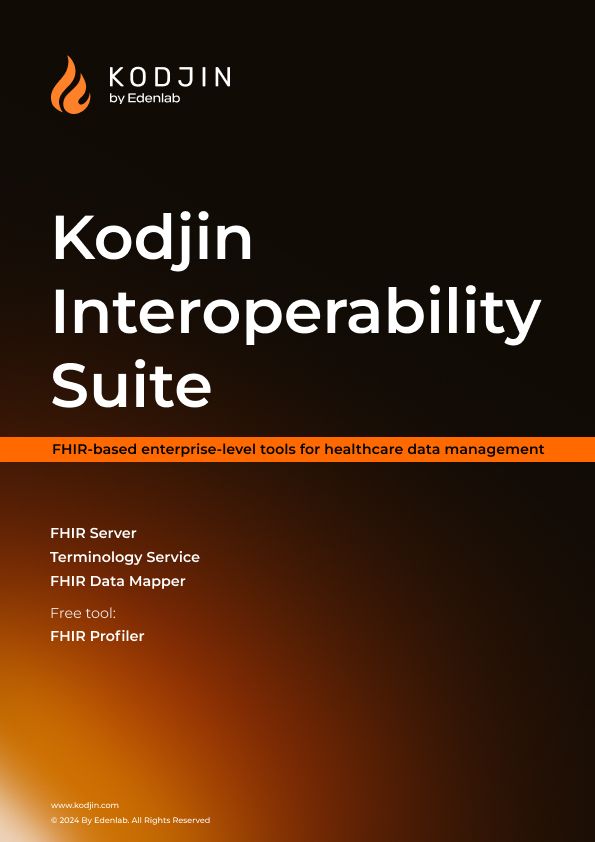Worldwide, requirements for healthcare exchange include implementing strategies and standards for ensuring the effective and secure exchange of healthcare data, including the US, UK, Australia, Germany, and more.
There are multiple burdens to data exchange and uninterrupted communication between disparate systems. These must be targeted to achieve the correct transmission and interpretation of the healthcare data by all systems involved in healthcare processes, commonly known as semantic interoperability.
In this article, we will talk you through examples of interoperability challenges in healthcare and share recommendations for effectively using data services, mastering data management, and ensuring seamless exchange of healthcare data.
Challenges of Interoperability in Healthcare
The World Health Organization’s (WHO) classification of digital interventions, services, and applications in health highlights some of the interoperability healthcare challenges.
- Lack of Access to Information or Data => Hampers comprehensive and accurate healthcare insights.
- Insufficient Utilization of Data and Information => Limits data’s capacity for ensuring informed decision-making.
- Lack of Unique Identifiers => Complicates the accurate identification of individuals across various healthcare settings.
- Inadequate Workflow Management => Impedes the seamless exchange of information.
- Lack of or Inappropriate Referrals => Affects the continuity and quality of patient care.
- Poor Planning and Coordination => Contributes to fragmented care and hinders interoperability.
- Insufficient Person(s) and Community Engagement => Complicates achieving comprehensive interoperability.
- Absence of Community Feedback Mechanisms => Limits the responsiveness of healthcare systems to community needs.
- Poor Accountability Between Health Sector Levels => Negates coordinated efforts toward interoperability.
Ultimately, the lack of interoperability in healthcare creates significant barriers to achieving cohesive and efficient healthcare delivery.
Healthcare Interoperability Solutions
To address these complex challenges associated with healthcare interoperability, several cutting-edge solutions have emerged. These solutions are designed not only to facilitate the integration of diverse systems but also to ensure that data, including FHIR bundles, is exchanged securely, efficiently, and in a manner that enhances patient care. Below are some of the most impactful solutions currently driving interoperability in healthcare:
Data Management
- Form Creation for Data Acquisition: Use electronic data collection tools for efficient surveys.
- Data Storage and Aggregation: Implement data warehouses and repositories for comprehensive healthcare statistics.
- Data Synthesis and Visualizations: Create business intelligence tools for informed decision-making.
- Automated Analysis of Data: Leverage predictive analytics and artificial intelligence, including machine learning, for generating valuable insights.
Data Coding
- Parse Unstructured Data: Develop automated algorithms for cleaning and linking unstructured information to structured datasets.
- Merge, Deduplicate, and Curate Coded Datasets: Implement terminology management applications to standardize data and ensure semantic interoperability in healthcare.
- Classify Disease Codes or Cause of Mortality: Use electronic diagnostic terminology software for accurate coding and reporting.
Data Exchange and Interoperability
- Point-to-Point Data Integration: Establish a national health information exchange platform for communication between different health information systems.
- Standards-Compliant Interoperability: Implement interoperability layers and ensure compliance with technical standards for data exchange.
- Message Routing: Use data orchestration for routing messages to appropriate components or external systems.
Data Governance Compliance
- Authentication and Authorization: Implementing identity verification and role-based access control for secure health record entries.
- Data Privacy Protection: Using digital applications for classifying and protecting sensitive data through data minimization and redaction.
- Data Consent and Provenance: Implementing consent management systems to empower users in controlling their data throughout its lifecycle.
- Trust Architecture: Utilizing digital applications to manage public and private trust within an organization and authenticate digital identities.
Bridging the Gap for Interoperability With FHIR
The digital approaches to data management suggested by WHO encompass the collection, aggregation, and storage of healthcare data for analysis, and the Fast Healthcare Interoperability Resources (FHIR) standard allows for storing data in a unified format while supporting its interoperable exchange.
Let’s break down how a server must work to comply with WHO’s recommendations for data services to support seamless data exchange and foster collaboration within the healthcare domain.
Achieving Data Management Excellence and Improving Data Exchange
Using data warehousing in healthcare is one of WHO’s recommendations for storing EHR and other healthcare data to enable analysis and reporting. For example, the Global Health Observatory enables the global exchange of healthcare data for surveys and informed decision-making. Another example is Ukraine’s National Clinical Data Repository, built using FHIR to store all primary health records in digital form and facilitate access to healthcare data for clinicians.
Using an FHIR-first service can help leverage data visualization functionality since it requires a clear understanding of the contextual information associated with the data. FHIR consists of building blocks called FHIR Resources, which are defined by a particular context and include all the needed standard metadata (e.g., ID, version, profile, text narrative, etc.).
Our team used the Kodjin FHIR Server to build a semantic layer analysis platform for Zoadigm to use FHIR as a standardized data format to support the analysis and visualization of healthcare data.
An FHIR server supports data collection, exchange, and advanced analytics, promoting informed interventions and more digitally proficient healthcare.
Mastering Data Coding and Ensuring the Accuracy of Health Data
WHO recommends using structured data vs. unstructured data for the efficient use of data services. Structured data is organized information that simplifies storage, access, interpretation, and healthcare data analysis. The Kodjin FHIR Server provides highly scalable storage for vast volumes of healthcare data while ensuring its standardized format for advanced management and exchange.
However, projects that have already created a system that perfectly covers their business needs may not want to craft an FHIR system to replace an existing one for compliance or other reasons. For that purpose, using the FHIR Facade would be an excellent alternative.
FHIR Facade is a custom-developed FHIR interface that facilitates seamless interoperability between your existing healthcare system and third-party FHIR-based applications. It acts like an FHIR server and provides the means for harnessing the benefits of the FHIR standard without necessitating complete system replacement.
Another WHO recommendation proven to be effective is using clinical coding for reporting and insurance. For example, the integration of ICPC-2 into Ukraine’s eHealth System provides clinicians with typical healthcare cases, ensures categorization of diagnoses and actions, and allows for standardized reporting.
A standardized approach to FHIR interoperability solutions in healthcare can help work with terminologies and codes that require integrating various code systems and real-time updates. The Kodjin Terminology Service allows for mastering standard and custom terminology sets and managing medical codes, terms, and terminology systems.
Our terminology service integrates with standardized sets like ICD-10, LOINC, SNOMED CT, and other code systems while supporting FHIR-standardized workflows and real-time terminology management functionality.
Upholding Data Governance Compliance
Data governance is a crucial aspect of data services that covers the security of access, modification, and exchange of sensitive healthcare data. Implementing robust data protection measures like RBAC or ABAC will support healthcare systems with authentication and authorization measures that protect patient information and maintain data privacy.
The data protection within the ONC and HIPAA-compliant Kodjin FHIR Server is based on the SMART on FHIR framework that protects sensitive data from unauthorized access and aligns with WHO’s recommendations for maintaining data integrity and security.
Takeaway
Achieving healthcare data interoperability requires a modern approach to data management and exchange functionality while supporting compliance with data governance. Using tools from the Kodjin Interoperability Suite will help you overcome interoperability challenges and ensure regulatory compliance in healthcare. Get professional assistance from our FHIR experts to target specific interoperability challenges that hinder the efficiency of your project.







